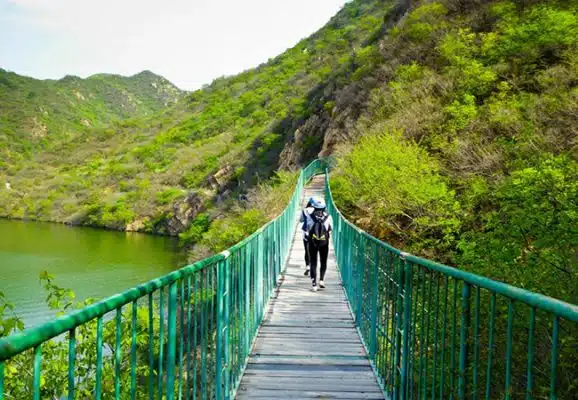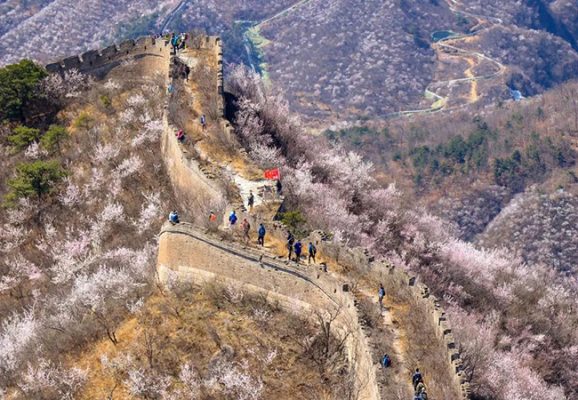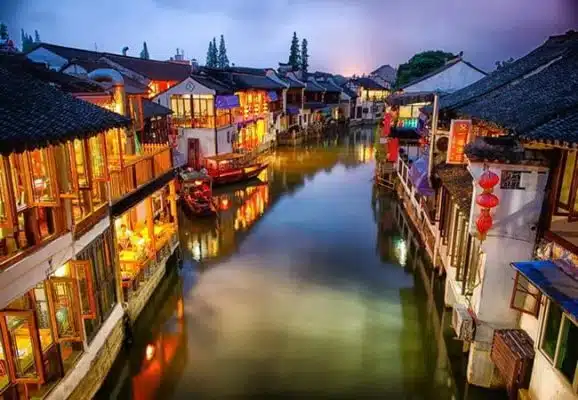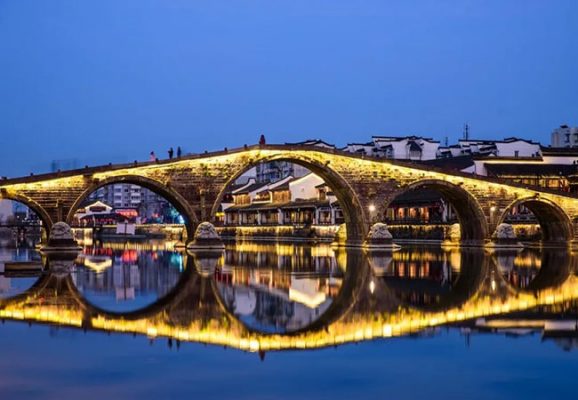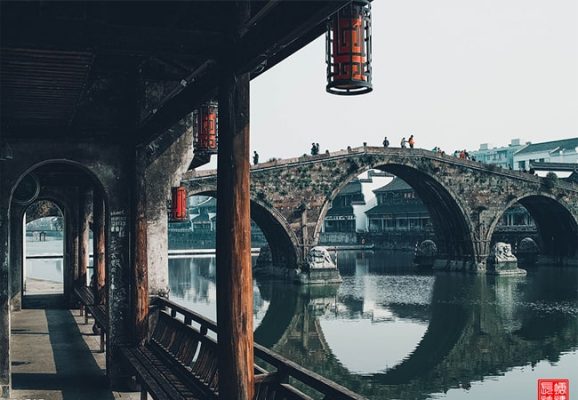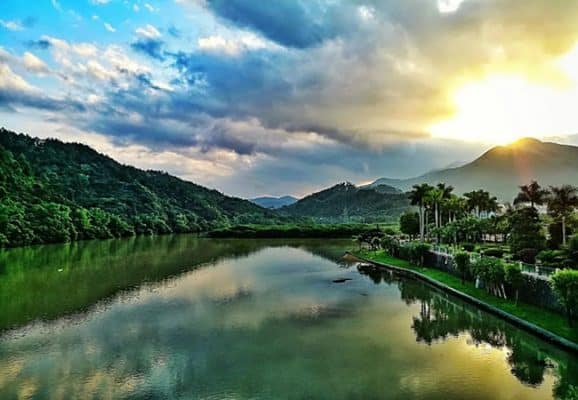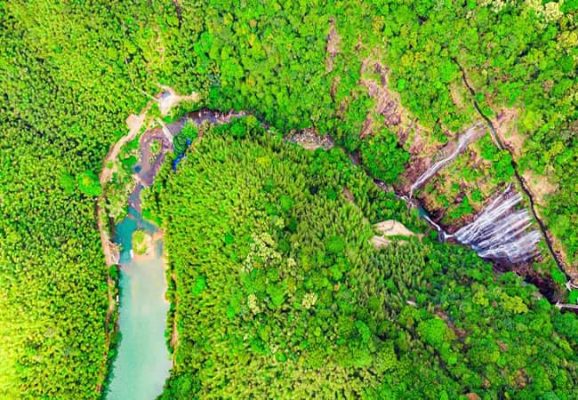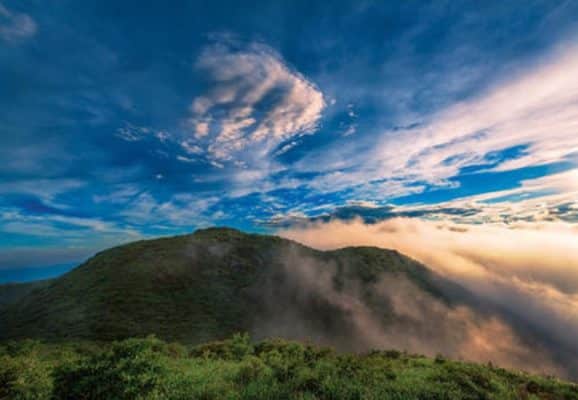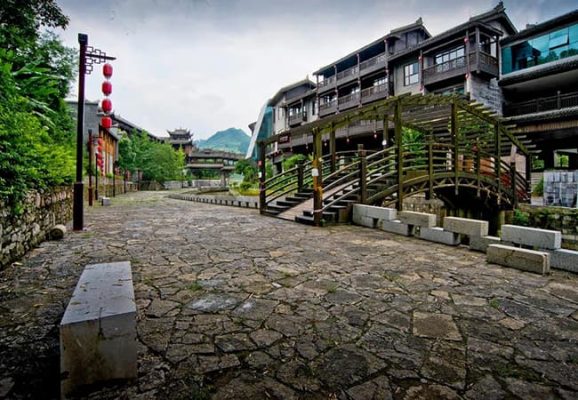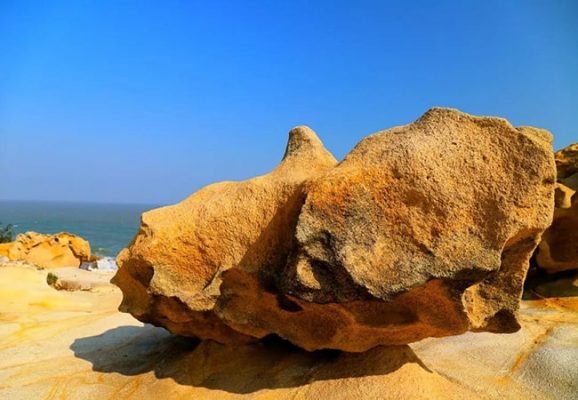Travelling Around the Surrounding Hidden Places during the Qingming Festival
The weather is getting warmer, and it’s a good time to go out for travelling! Plan your Spring trip before the upcoming 3 days Qingming holiday. If you don’t want to take off from work, you can explore your city’s surroundings.
We have discovered a few good places, such as the ancient charm around Beijing, the ancient town life escaping from busy Shanghai, and the forest hot spring experience around Guangzhou. You will love this kind of travel.
Beijing
Yunju Temple
In Summer: 8:30~16:30 In Winter: 8:30~16:00
In archeology, cultural relics with words have always been regarded as the most precious. It is no wonder that Yunju Temple is known as “Beijing Dunhuang” in academic circles. In the thousand years of history from the Sui to Ming dynasties, devout monks have compiled 1122 stone scriptures with 35 million words at this temple.
There are 14,278 stone steles scattered in many Buddhist scripture caves in the temple and Shijing Mountain. In 1999, 100,082 stone scriptures in Liao and Jin dynasties were hidden in the underground palace with constant temperature and humidity and full of nitrogen. This “underground stone scriptures Great Wall” has become the biggest attraction of Yunju Temple today. After entering from the mountain gate, you can turn left in front of the pharmacist shop, and walk towards the south tower, which is the “Stone Scripture Palace”. Thousands of stone steles in Liao and Jin dynasties are stacked on top of each other, presented in front of you through a layer of glass. For ordinary tourists, the scriptures on the steles are difficult to distinguish and more difficult to understand, therefore, just concentrate on feeling the shocking atmosphere here.
Go back to the Medicine Hall and continue walking inside. There are two other treasures of Yunju Temple on the left and right sides of this courtyard: the wooden scripture and the paper scripture. Among them, the wooden scriptures all use fine pear wood, and the fonts and paintings are extremely exquisite; and the paper scriptures are written in blood by Gaozu Hui in the Ming Dynasty who pierced the tip of his tongue. If you are a devout Buddhist, you can go to the Great Compassion Hall to admire the extremely precious Buddha’s body relics, and you need a certain amount of offerings to enter. When you finally leave, you can also take a look at the cultural relics collection in the courtyard.
If you want to have a relax, you can go to Shijing Mountain (open from May to October) 1 km north of Yunju Temple. The eight Buddhist scripture caves on the mountain still contain many stone scriptures from the Sui and Tang Dynasties. Climbing for an hour on the quiet trail, you can also have a perspective overlooking of Yunju Temple.
Huanghua City
8:00~17:00
If self-driving is available, we highly recommend you to visit Huanghua city. The ancient Great Wall has been divided into three parts, forming a very unique landscape of “Water Great Wall”.
Compared with other great walls in the surrounding area, there are less tourists but more playing methods. In addition to walking in the scenic area, the cruise ship that shuttles between the reservoirs is the main tour item. You can purchase a pass for 75 yuan including a two-way cruise. In addition, rappelling from a 100-meter-high reservoir dam (10 yuan) is also worth experiencing. If you like to hike, you can hike eastward, or climb up the mountain to find a perspective overlooking of the Huanghua City Reservoir and the Great Wall.
On weekends and statutory holidays, there is a special line bus from Dongzhimen Bus Hub to Huanghua City, including a total of 80 yuan for scenic spots. On weekdays, you can take the 916 here to Huairou, get off at South Garden Third District Station, and then go straight for about 200 meters and cross a road. Arrive at the 4th District of South Garden and take the special bus of “Huairou-Huanghua City”, which runs every 1 hour. When returning, don’t forget that the last bus of No.916 is 19:00.
Shanghai
Zhujiajiao
During the Song and Yuan Dynasties, Zhujiajiao was known for its weaving industry in the south of the Yangtze River. During the Ming and Qing Dynasties, the rice industry also thriving, forming a prosperous bazaar with “thousands of shops on the three-mile long street”. Zhujiajiao is the largest and most mature water town around Shanghai. Even if you compare it with water towns in Jiangsu and Zhejiang, Zhujiajiao will not fail due to its own unique characteristics.
In the ancient town where river can form a street, the river channel west of Fangsheng Bridge is dense and vertical, and Xijing Street is built along the water. The North Street has a well-preserved Ming and Qing market, while to the east of Fangsheng Bridge, the river channel is widening. Thanks to the favor and transformation of the artists, Zhujiajiao’s style is very mixed, antique, popular, literary, and fresh and other styles coexist, and the newly built Shangduli is a high-end atmosphere and modern temperament. The ancient town has a market every weekend, but the weekend is also the time when Zhujiajiao has the most tourists.
At People’s Square (Puan Road, Yan’an East Road) in downtown Shanghai, take the Zhuhu Express Line (every 20 minutes from 6:00 to 22:00, the fare is 12 yuan, 1 hour) directly to Zhujiajiao, the last bus of the return journey is departing at 21: 00.
Cycling on Chongming Island
Shanghai leaves the best ecology to Chongming Island. The two wetlands and the forest park are natural oxygen bars, and the island is full of idyllic scenery that can be seen from above. The smooth roads and clean air make it a paradise for cyclists. The predecessors have already explored the way and planned several cycling routes for you. There are many bicycle rental and return points along the way, so you can easily ride to each Scenic spots, or all the way around the island to see the Yangtze River and enjoy the sea breeze.
Yimi bicycles (60-150 yuan/day for renting a car) have rental points in Chongming Xuegong, Nanmen Wharf, Xisha Wetland, Forest Park, etc., and have designed short and mid-range routes, trips around the island, and other routes tour for cyclists. Range from 6 kilometers to 30 kilometers, with different strengths and themes, the cycling routes, kilometers, and required time are all listed in detail.
Hangzhou
Tangqi
90 yuan for small joint ticket and 120 yuan for big joint ticket
You can also browse the ancient town without buying a coupon ticket, but you can’t enter the attractions such as Jinshi Pavilion. This is the starting point of the Hangzhou section of the Beijing-Hangzhou Canal, and there are not many tourists. The only remaining seven-hole ancient stone bridge on the Beijing-Hangzhou Canal, Guangji Bridge, is also on the ancient town of Tangqi. Cafes, Hangzhou restaurants, snacks and desserts are all available here, and the Canal Barn Museum is also worth visiting.
You can choose to spend the night in Tangqi, or you can choose to go back and forth on the same day. Take the branch line of Subway Line 1 and transfer to bus 786 at Linping South Road to the end; if you drive to Tangqi by car, start from Wulin Square and go up the Tang Elevated Highway, take the Hangzhou North Ring Line towards Shanghai, and exit at the Tangqi Exit of Shenjiahu Expressway .
Jingshan Mountain
8:00~17:00
Jingshan Mountain is an extension part of the Tianmu Mountains. Strictly speaking, it is not a scenic area. You can climb mountains, eat local foods in farmhouses, burn incense and worship Buddha. There are also bamboo rafts and kayak rafts that are common in Jiangsu and Zhejiang but have few characteristics. Mountain roads are more interesting than those in the urban area.
The Wanshou Temple on the top of the mountain (ticket is 10 yuan) is the birthplace of the Rinzai sect of Zen Buddhism in Japan. You can drive directly to the top of the mountain, or you can choose to reach it on foot. The roads are paved with stones and dense bamboo forests on both sides. It takes about 1 hour to reach the top of the mountain. It is best to go to Jingshan before and after Qingming Festival and Guyu in spring. At that time, you can buy the newly picked Jingshan tea.
Jingshan is about 54 kilometers away from downtown Hangzhou. Take No.506 from Wulinmen North to the terminal Yuhang West Station and change to No.533. You can directly reach Jingshan Temple on the top of the mountain, which takes about 1.5 hours. If you want to take a mountain road, you can get off at Tongqiao Station in advance and find the entrance of Jingshan Ancient Road to climb up.
Guangzhou
Shawan Ancient Town
The ancient town is free, the scenic spot joint ticket is 40 yuan, the audio guide is 5 yuan, and the explanation is 100 yuan
9:00~17:30
The Shawan ancient town is a rare place located in the surrounding areas of Guangzhou. Whether it is its own resources or development awareness, the “Hometown of Floating Color” and “Hometown of Guangdong Music” are not just slogans born for publicity. The ticket office provides two maps, one is to introduce the highlights of the ancient town, and the other is to recommend the deliciousness of the ancient town. Both of them are very useful.
The ancient town was built in the Song Dynasty. The old village pattern is well-preserved. A three-layered faulted ancient wall clearly outlines the history of the Ming, Qing and the Republic of China. The narrow blue stone alleys are very unique and the wok ear walls and oyster shell wall is a typical Lingnan feature, and some graffiti walls imitating the Penang style of Malaysia are in harmony in the ancient town.
The five fee-paying attractions are Liugeng Hall, Sanren Hall, Shawan Guangdong Music Hall, Academician He Binglin Memorial Hall and Huangyou Town Yabo Art Museum. The first two are the most worth seeing, but tickets are not sold separately for each attraction. Liu Gengtang is also called the He’s Ancestral Hall. It is the oldest ancestral hall in the Lingnan area. It was built in the Southern Song Dynasty and later expanded and rebuilt. There are many flagpole clips outside the ancestral hall, the door god painted on the main entrance, the dragon’s spine on the ritual gate, and the inscriptions on the forehead all revealed the prosperity of the He family in the past.
Sanren Hall is the birthplace of Guangdong music. The “Three Masters of He” created famous works here. The gray sculptures on the eaves of the building and the three fruitful trees in the courtyard are very worth seeing. Shawan Guangdong Music Hall often has local folk music performances. You can also learn more about the development of Guangdong music here. There are also many free attractions and sights in the ancient town, such as Wenfeng Pagoda, ancient wall ruins, farming life museum, Guanyin Temple, Yuxu Palace, etc.
Conghua
Conghua has 68.8% forest coverage and abundant geothermal hot spring resources. You may not have time to learn more about the city, but when you take a bus to the scenic spots, you can feel the open road and breathe fresh air. The most famous hot spring in Conghua, Bishuiwan Hot Spring Resort (hot spring ticket is 189/219 yuan on weekdays/weekends; accommodation starts at 1039 yuan, including breakfast and unlimited hot springs; 9:00-24:00) is the oldest hot spring resort in Conghua . In addition to the wide variety of hot spring pools and garden views, there are also many consumer facilities inside, and there are various luxury suites for accommodation, and you can enjoy unlimited hot springs. If you only purchase hot spring tickets, you can not use it except for the several pools exclusively for residents. You can soak in 33 hot spring pools with different themes and functions.
Xitou Village, located in the northeast of Liangkou Town, Conghua District, is surrounded by forests and canyons. Thanks to the most beautiful hiking route in Guangzhou-Yinggu Line, it is highly praised in the outdoor circle of Guangzhou, and locals who drive by themselves on weekends also push up it’s popularity. Entering from the “Xitou Stone Alley” plaque, this 200-meter-long stone alley has a history of more than 400 years. Today, both sides are covered with specialty shops such as bacon.
Changsha
Daweishan Mountain
Daweishan Mountain, the birthplace of Liuyang River, is located in the northeast of Liuyang, about 140 kilometers away from Changsha. Daweishan Mountain National Forest Park (Tickets are 68 yuan from November to March of the following year, 98 yuan from April to October; canyon rafting is 198 yuan, ski night skiing is 280 yuan / 3 hours), suitable for self-driving to relax and see the wild animals and plants in the mountains and geopark. Locals often come here to admire azaleas in early May. In summer, you can experience rafting to escape the heat.
From downtown Changsha via Sanyi Avenue to Changliu Expressway, passing through Liuyang City, it takes about 2.5 hours to arrive and the toll is 55 yuan. At the foot of Daweishan Mountain, there are two towns, Baisha and Dongmen. After being merged into Daweishan Town, Dongmen can be developed and constructed vigorously, while Baisha still retains its simplicity and tranquility. The ancient town of Baisha has a history of more than 500 years, and here is the site of the Shangping Conference of the Autumn Harvest Uprising. The Daxi River, a tributary of the Liuyang River, runs through, and an ancient bridge connects the two banks. The stilt buildings built by the Hakkas near the river, the flower quilts drying on the bridge, and the silhouettes of local people washing and fetching water on the shore are all reflected in the water, making people unable to take pictures. Good photos can also be taken in Hedong’s ancient street of Mashi and the black brick and black tiled houses. Drive along Dongbai Road from Daweishan Town to the northeast for about 15 kilometers will arrive.
Chongqing
Qianjiang
Compared with the surrounding Wulong and Youyang, Qianjiang’s landscapes are not very attractive. In fact, Qianjiang has its own unique charm. It is a small minority settlement in Chongqing, where the Tujia and Miao nationalities live. If you want to learn more about the history and customs of ethnic minorities, you can go to the Chongqing National Museum in Qianjiang City to take a look.
The Urban Canyon Park is like a coastal city advertised that you will see the waves and beaches as soon as you go out. Qianjiang City is known as the city on the gorge and the gorge in the city. Indeed, a canyon about 8 kilometers long passes through the city, and you can see the spectacular canyon scenery as soon as you go out.
Xiamen
Zhangzhou
If you follow the wind and the waves to see the sea, you must not miss this coastline. Starting from Xiamen, it takes about 1 hour by car to reach the Zhangzhou Binhai Volcano National Geopark. If the weather permitting, you will have the opportunity to travel from the geopark to the two most attractive outlying islands in southern Fujian, 1.4 million columnar basalts on Nanding Island , which is the largest and densest group of basalt rock pillars known in the world.
Linjinyu is an island made of volcanic rock. There is an ancient volcanic crater formed more than 20 million years ago, as well as 16 volcanic fumaroles and a cluster of rivet-shaped stomata of several thousand square meters. The most famous Liu’ao Abstract Gallery is located on the beach facing the sea in Xincuo Village, Liu’ao Peninsula. It is a challenge to modern artists by nature’s extraordinary craftsmanship. The sea here is free and natural, especially the red rocks on the beach with beautiful textures.
After this, you can go straight to Dongshan Island to eat seafood. Dongshan Island’s recreational islands are basically based in Tongling Town in the northeast corner. Fengdongshi, Guandi Temple, and Nanmen Bay are all located here. Maluan Bay, the star beach, is close to the south. It is overcrowded in summer and the prices are much more expensive than Tongling. Jinluan Bay, 7 kilometers away, has sparse passenger flow and clearer water. If you want to take a different path, a trip to the fishing village of Wujiao Bay will also allow you to see a different side of the bay.





